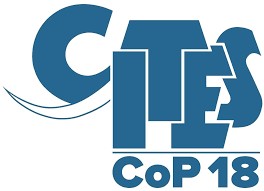

13.09.2019
The 18th meeting of the Conference of the Parties of the Convention on International Trade in Endangered Species of Wild Fauna and Flora (CITES COP18) concluded Wednesday, 28 August in Geneva, Switzerland, with adoption of several agenda items that impact trade in several tropical timber species.

IWPA, with whom ATIBT had exchanged before the Conference, was present at the CITES Conference. Three proposals of relevance to wood products from central Africa have been adopted during this conference.
The first one (COP18 Prop.52) concerns Bubinga species (the three species that are listed in Appendix II : Guibourtia demeusei, Guibourtia pellegriniana and Guibourtia tessmannii) and Rosewoods (Dalbergia spp). Annotation #15 has been amended and will exclude finished products to a maximum weight of wood of the listed species of 500g per item, and finished musical instruments, finished musical instrument parts and finished musical instrument accessories.
The second one (COP18 Prop.53) concerns Afrormosia (Pericopsis elata). Annotation #5 will be amended and include plywood and transformed wood as follows: « Logs, sawn wood, veneer sheets, plywood, and transformed wood. The definition of transformed wood is defined by HS code 44.09 : Wood (including strips, friezes for parquet flooring, not assembled), continuously shaped (tongued, grooved, v-jointed, beaded or the like) along any edges, ends or faces, whether or not planed, sanded or end-jointed). »
The third one (COP18 Prop.54) doesn’t concern wood from central Africa directly, but could create confusion due to the name that has been used: « African padouk » has been added to CITES Appendix II. However, this concerns Pterocarpus tinctorius (from eastern Africa) and not Pterocarpus soyauxii (from central Africa). Proposal 54 clearly precises that the name « African Padouk » is also used for Pterocarpus soyauxii, which is not listed in the CITES Appendices.
Other interesting recommendations concerned the CITES Tree species programme, that was asked for to be continued, and the intention to prioritise better timber species identification.